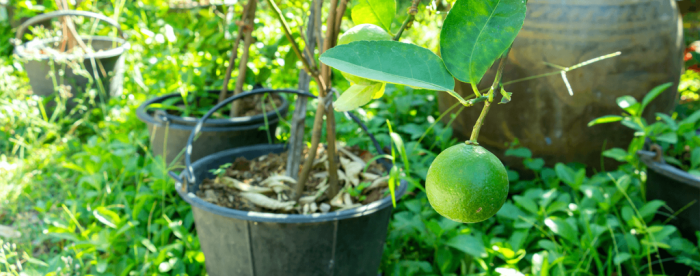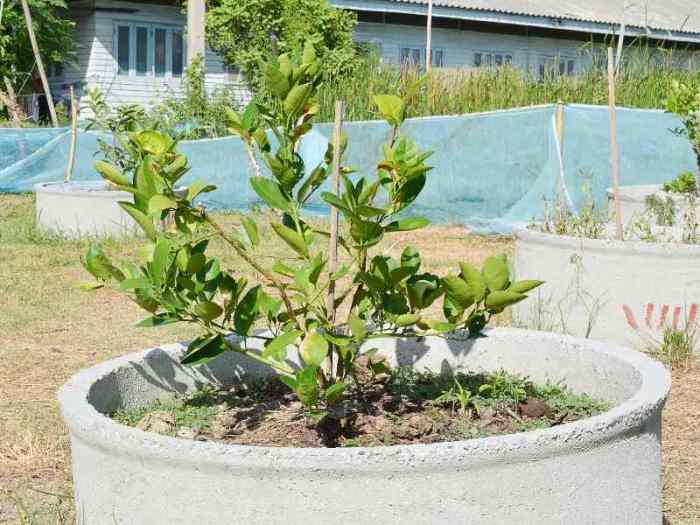How to Plant a Key Lime Tree
Choosing the Right Key Lime Tree

How to plant a key lime tree – Selecting the perfect key lime tree is absolutely crucial for a bountiful harvest. The choice depends heavily on your specific climate, available space, and your desired level of involvement in tree maintenance. Getting this right from the start saves you a load of hassle down the line.
Key Lime Tree Varieties and Climate Suitability
Key limes, unlike their Persian cousins, are notoriously sensitive to frost. Therefore, choosing a variety with good cold hardiness is paramount, especially if you live in a region with even mildly chilly winters. Different varieties exhibit varying degrees of tolerance to cold temperatures and thrive in different climatic conditions. For instance, the ‘Mexican’ lime, a common variety, is less cold-hardy than some of the more recently developed cultivars.
Conversely, some hybrid varieties, bred for increased cold tolerance, are better suited to areas experiencing occasional frost. Careful consideration of your local climate is key.
Dwarf Key Lime Trees versus Standard-Sized Trees
The decision between a dwarf and a standard key lime tree hinges primarily on space constraints. Dwarf varieties, typically grafted onto rootstock that restricts their growth, remain significantly smaller than their standard counterparts. This makes them ideal for smaller gardens or container planting. Standard key lime trees, on the other hand, can reach impressive heights, requiring more space and potentially needing more robust support structures.
Dwarf trees are often preferred for ease of harvesting and maintenance, whilst standard trees potentially offer a larger overall yield.
Disease Resistance in Key Lime Trees
Selecting disease-resistant varieties is a smart move, significantly reducing the risk of common key lime afflictions like citrus canker or greasy spot. These diseases can severely impact fruit production and overall tree health. Investing in a robust, disease-resistant variety can save you time, money, and a whole heap of stress in the long run. Look for varieties that are specifically bred for resilience against common pathogens in your region.
Checking with local nurseries or agricultural extension offices is a top tip for identifying suitable disease-resistant varieties.
Comparison of Key Lime Tree Varieties
The table below compares three popular key lime tree varieties, highlighting their mature size, cold hardiness, and fruit yield. Remember that these are general estimates and actual results may vary depending on growing conditions.
| Variety | Mature Size (approx.) | Cold Hardiness (minimum temp. °F) | Fruit Yield (approx.) |
|---|---|---|---|
| Mexican Lime | 10-15 ft | 30°F | Moderate to High |
| Bearss Lime | 15-20 ft | 28°F | High |
| Improved Meyer Lemon (partially key lime genetics) | 8-12 ft | 25°F | Moderate |
Key Lime Tree Care and Maintenance: How To Plant A Key Lime Tree

Right, so you’ve got your cracking key lime tree all planted up. Now for the nitty-gritty – keeping it alive and producing those zesty little limes. This section covers the essentials for maintaining a healthy and productive tree, from feeding it right to dealing with those pesky pests.
Fertilization of Key Lime Trees, How to plant a key lime tree
Key lime trees, like all citrus, are hungry beasts. Regular fertilization is crucial for optimal growth and fruit production. The type and amount of fertilizer will depend on the tree’s age and the soil conditions. Young trees (under three years old) generally require a balanced fertilizer with a lower nitrogen content to encourage root development. As the tree matures, you can increase the nitrogen to boost foliage and fruit production.
Embark on your citrus journey by planting a key lime tree; choose a sunny spot with well-draining soil. The success of your key lime, much like any evergreen, hinges on the right timing, so consider the best time to plant, which is often aligned with the local climate. To learn more about selecting the ideal planting season for evergreens, consult this helpful guide: when to plant an evergreen tree.
Once you’ve determined the perfect time, nurture your key lime with consistent watering and watch it flourish.
A good rule of thumb is to follow the recommendations on the fertilizer packaging, adjusting based on your tree’s specific needs and soil test results. Over-fertilizing can be just as damaging as under-fertilizing, so a soil test is a right good idea before you even start. Think of it as a health check for your tree – you wouldn’t skip a checkup for yourself, would you?
Pruning Techniques for Key Lime Trees
Pruning is key (pun intended!) to maintaining a well-shaped tree and encouraging good fruit production. Regular pruning removes dead, damaged, or diseased branches, improving air circulation and light penetration. It also helps to shape the tree to a manageable size and prevent overcrowding, which can lead to reduced fruit yield. The best time to prune is during the dormant season (winter), but light pruning can be done throughout the year to remove any suckers or overly vigorous growth.
The aim is to create an open canopy that allows sunlight to reach all parts of the tree. Avoid excessive pruning, as this can stress the tree and reduce its productivity. Think of it like a haircut – you wouldn’t want to take off too much, would you?
Common Pests and Diseases Affecting Key Lime Trees and Their Management
Sadly, your lovely key lime tree isn’t immune to problems. Common pests include citrus aphids, scale insects, and citrus leafminers. Diseases like citrus canker and greasy spot can also cause significant damage. Regular inspection is crucial for early detection. Management strategies range from cultural practices like proper sanitation and pruning to chemical controls.
For example, insecticidal soap can be effective against aphids, while copper fungicides can help control fungal diseases. Always choose environmentally friendly options whenever possible and follow the instructions carefully. Early intervention is key to preventing widespread infestations or infections. Think of it like dealing with a spot of bother – the sooner you act, the better.
Key Lime Tree Maintenance Schedule
| Season | Task | Frequency | Notes |
|---|---|---|---|
| Spring | Fertilize | Every 6-8 weeks | Use a balanced citrus fertilizer. |
| Summer | Water deeply during dry spells | As needed | Monitor soil moisture regularly. |
| Autumn | Light pruning | As needed | Remove any dead or diseased branches. |
| Winter | Major pruning | Annually | Shape the tree and remove any crossing branches. |
Harvesting and Using Key Limes
Right, so you’ve nurtured your key lime tree from a wee sapling to a bountiful citrus producer – top marks! Now, the moment of truth: harvesting those zesty little gems. Knowing when and how to pick them is key (pun intended!) to unlocking their full flavour potential. Get this wrong, and you’re left with a less-than-stellar citrus experience.Key limes, unlike their larger cousins, don’t typically change colour dramatically as they ripen.
Their vibrant green hue remains pretty consistent throughout. Therefore, relying solely on colour is a bit of a dodgy method.
Key Lime Ripeness Indicators
Ripeness is determined more by feel and time than by a shift in colour. A ripe key lime will feel firm but yield slightly to gentle pressure. It should also possess a fragrant aroma, a delightful indicator of its readiness. The optimal harvest time is usually 6 to 8 months after flowering, but this can vary slightly depending on growing conditions.
Think of it like this: a bit of a gut feeling is needed, combined with a bit of common sense and experience.
Harvesting Techniques for Optimal Quality
Harvesting key limes correctly ensures both the quality of the fruit and its shelf life. Use clean pruning shears or clippers to snip the limes from the branches, taking care not to damage the fruit or the tree. Avoid pulling or twisting, which could harm the tree’s delicate branches. Gently twisting the lime until it separates from the stem is a much better approach.
Harvesting in the morning, after the dew has dried, is ideal, as the fruit is less likely to be bruised and is at its peak flavour. Properly harvested key limes can last for several weeks in the fridge, making them a fantastic addition to your kitchen.
Culinary Applications of Key Limes
Now for the fun part: what to do with your glorious harvest! Key limes boast a uniquely tart and intensely aromatic flavour profile, significantly more acidic than regular limes. This tangy zest is what makes them so special.
- Key Lime Pie: The undisputed champion of key lime recipes. The classic creamy filling, balanced by the tartness of the limes, is a true taste sensation.
- Margaritas: A splash of key lime juice elevates a simple margarita to a whole new level of refreshing deliciousness. The intense flavour cuts through the tequila beautifully.
- Seafood Dishes: Key lime’s bright acidity complements the richness of fish and shellfish perfectly. A simple ceviche or a vibrant salsa with key lime juice is an absolute winner.
- Cocktails: Beyond margaritas, key limes work wonders in numerous cocktails. Think mojitos, caipirinhas, or even a simple gin and tonic with a twist.
- Dressings and Sauces: Add a zesty zing to your salads and sauces with a squeeze of key lime juice. Its unique flavour works particularly well with Asian-inspired cuisine.
A Visual Description of a Ripe Key Lime Tree
Imagine a small to medium-sized tree, perhaps around 8-10 feet tall, its branches laden with hundreds of small, oval-shaped fruits. The leaves are a vibrant, glossy green, providing a striking contrast to the abundant clusters of limes. These limes are not the bright yellow of their larger cousins, but rather a deep, rich, almost emerald green, their skin smooth and slightly bumpy to the touch.
Each lime is approximately 1.5 to 2 inches in diameter, their tiny size belying their intense flavour. The overall impression is one of vibrant life and abundant, sun-drenched productivity – a citrus jewel in your garden.
Query Resolution
What is the best time of year to plant a key lime tree?
The ideal time is during the spring or early summer after the last frost, allowing the tree to establish its roots before winter.
How often should I water a newly planted key lime tree?
Water deeply and regularly, especially during dry periods, ensuring the soil remains consistently moist but not waterlogged. Frequency depends on weather conditions.
Can key lime trees tolerate frost?
Key lime trees are sensitive to frost. Protect them during cold snaps with covers or relocate them indoors if necessary.
How long does it take for a key lime tree to bear fruit?
It typically takes 2-3 years for a key lime tree to produce its first fruit, but yield increases over time.
